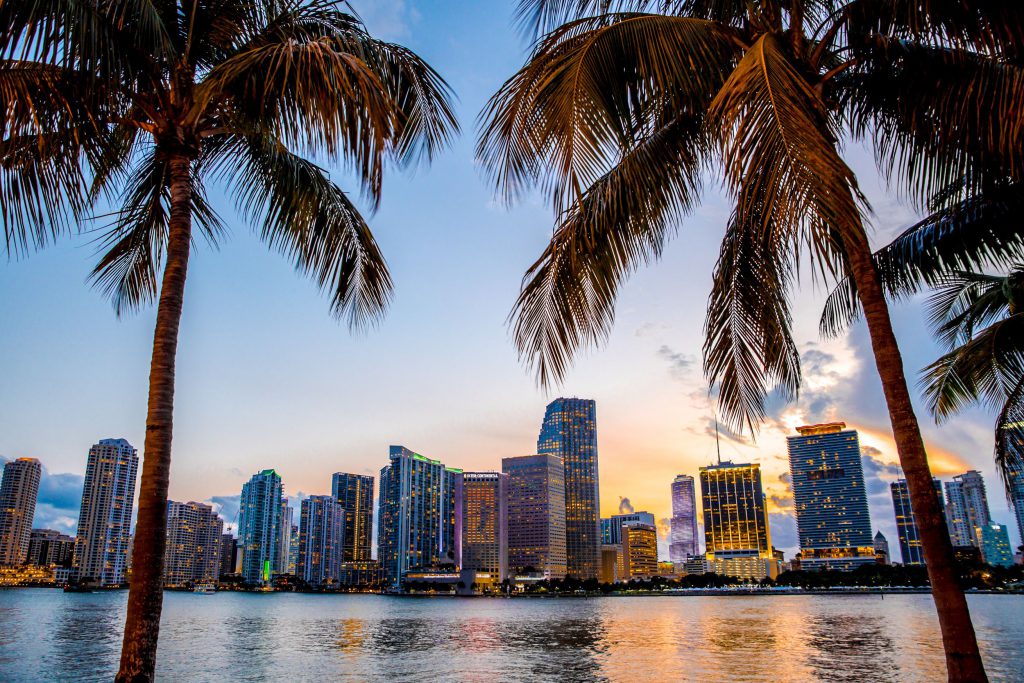Maine, situated in the far reaches of the north-eastern seaboard, is known as one of the quietest, serene and peaceful states you could choose to live in. With a population of just 1.3 million people and an estimated 24 billion trees.
It may be known as “The Pine Tree State’, with 80% of the land is covered in forest, but there’s much more going on in Maine than just its natural beauty. There are an incredible 3500 miles of rugged Atlantic coastline to explore, stretching from the New Hampshire border to the Canadian province of New Brunswick, and plenty of opportunities for work, business, and play.
Another notable aspect that puts Maine on the map, is their notoriety for some of the best seafood in the world. We hope you like lobster because Maine produces over 40 million pounds of it a year, more than anywhere else in the country. But their menu doesn’t stop there, the state also has an abundance of fresh clams, scallops, crab, oysters, mussels, and fish hauled straight out of the ocean and onto your plate every day.
Not to mention, Maine is also one of the top 10 healthiest states in the country, and, thanks to all those pine trees, it is famous for having some of the cleanest air in all of the US, making it an ideal location for those with breathing issues or asthma.
If you’re moving to Maine, there are a lot of things you’re going to need to know. Luckily, you’ve come to the right place.
Here are a few pros and cons to consider as you make your move to The Pine Tree State:
Only a small proportion of the state’s workforce is employed in agriculture. Aroostook county, where potatoes are the main crop, is one of the few areas with rich agricultural soils. Terrain and soil conditions throughout most of the rest of the state are inadequate for large-scale farming; in addition to potatoes, eggs, and dairy products make up the greatest part of farm income. Maine also produces high-quality apples, blueberries, and other fruits, and dairying is an important activity. With its vast areas of forest, Maine was once a national leader in the forest-products industry. Although the sector has experienced a decline in the face of strong international competition, it has remained a significant employer in the state. Fishing also has a long tradition in Maine. However, fish stocks largely have been depleted, and—with the exception of lobster production—fishing has become a marginal activity.
The service sector represents the largest component in the market value of Maine goods and services; the manufacturing sector is second.
Maine is a place of self-reliance, which can extend to getting around the state. With an overall lack of public transportation, it is virtually required to own a vehicle (except for commuters in major towns and cities). There is also only one interstate highway (I-95) that runs south to north. Regardless, there are several convenient options when it comes to traveling in Maine and beyond.
The only passenger train in Maine is Amtrak’s Downeaster, which runs from Boston, Massachusetts to Brunswick, Maine with stops in Wells, Saco, Portland, and Freeport.
There is some bus transport, mainly between Portland and Bangor, with a small shuttle bus that runs at a few inconvenient times to Bar Harbor. But, generally, you aren’t going to find any public transport to the many small towns of Maine.
Our cost of living indices is based on a US average of 100. An amount below 100 means Maine is cheaper than the US average. A cost of living index above 100 means Maine, Maine is more expensive. Maine cost of living is 96.5
- Utility Bills: Because of the long, cold winters, Maine has the tenth highest utility costs in the nation. You can expect to pay around $464.45 per month for gas, water, electricity, internet, and cable, which is nearly $42.37 more than the US median.
- Groceries and Food: Maine residents have the third highest grocery bills in the country. The average single person spends $4,115 on groceries annually, which is nearly $1,500 more than the US median.
- Gas Prices & Transportation: You’ll pay slightly more than the national average for gas and vehicle property tax, which cost $1,234 and $918 per year, respectively. You’ll also have to factor in maintenance and repair fees, which cost an average of $354 per year, plus title and registration costs, which are $35 each.
- Healthcare and Medical: The Agency for Healthcare Research and Quality calculated that the average individual employee’s contribution to healthcare in Maine is $1311 a year, over $100 cheaper than the national average. If paying out of pocket the cost of medical bills for doctor visits and in-hospital care is almost exactly on par with the national average being just 0.1% more expensive.
Moving is one of the most exciting and overwhelming events in our lives. While there are many moving companies and various different resources to choose from, there is only one Real Movers. If you are in the process of planning a long-distance move, and you are looking for a moving company you can trust, Real Movers is your perfect choice.















